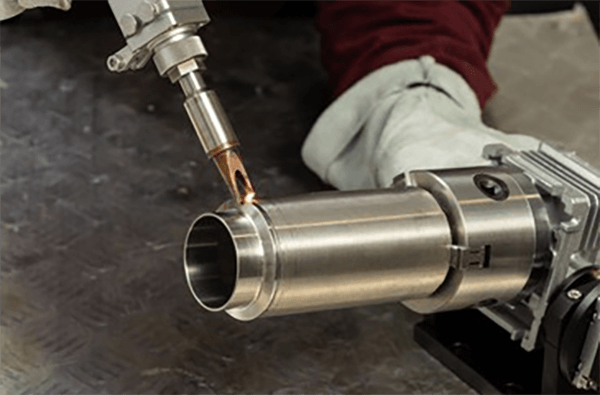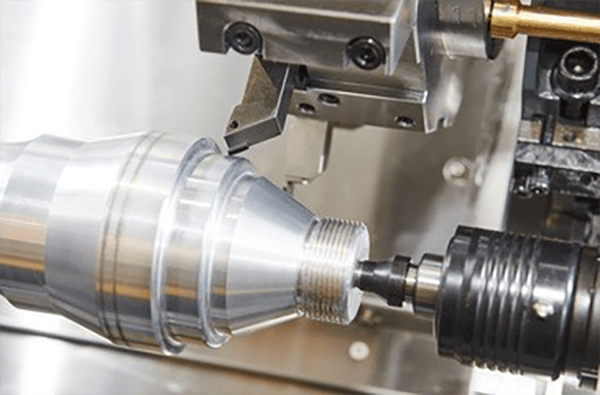
Attaining target exterior polish for a CNC part becomes necessary.
- Engineering annotations specify detailed surface expectations for components
- Callouts frequently reference metrics such as Ra (average roughness) for roughness quantification
- Understanding these callouts is fundamental for ensuring manufactured parts meet performance requirements
- Chosen finish influences lubrication retention, friction behavior, and part life
- Right interpretation of surface notes ensures attainment of the sought condition
Defining Precision in CNC Machining

CNC machining represents a game-changing method in production with programmed toolpaths the apparatus generates complex components precisely.
- Numerical control tools generate quality components from varied media
- Adaptable CNC processes fit the demands of aerospace, automotive, and medical markets
- Programmed machining assures dependable consistency across manufacturing cycles
From initial prototype stages to mass-manufacture CNC machining supports modern production workflows
Comprehending CNC Machine Specifications
Making sense of CNC specs can seem confusing on first pass
Though a little background plus organization helps you interpret technical details effectively
Launch by determining central specs: spindle rpm, feed velocity, accuracy, envelope, controller
Each of these specifications contributes to the machine's overall performance.
In practice greater spindle speed often suits ductile substrates whereas higher feed supports productivity.
Grasping those connections helps choose machinery aligned with your needs
Remember to consult the manufacturer's literature thoroughly.
Producer documentation frequently delivers important notes and clarifies terminology
CNC Machinery: An Exhaustive Guide
CNC machines are specialized computer-controlled systems used in manufacturing for precise and automated fabrication of various materials They read numerical control code to orchestrate cutter motion and axis control.
- Representative CNC types cover milling tools, turning machines, routers, plasma cutters
- Machining methods apply across metals, plastics, wood, and composite substrates
- Furthermore CNC machines allow for rapid prototyping and low-volume production runs making them valuable assets for small businesses and research centers
CNC Basics and Explanations
They manifest coupling of mechanical fidelity and complex software governance Automated tools implement code to produce elementary parts and sophisticated assemblies The fundamental principle behind CNC machines is the translation of digital designs into physical forms.
- CNC machining
- Code-driven production workflow
It entails finely timed actuator motions governed by software Operators play a crucial role in selecting the appropriate cutting parameters monitoring the operation and ensuring the quality of the final product.
The Role of Surface Finish in CNC Machining
Attaining target texture in CNC processes is critical It greatly affects the final product's performance as well as its aesthetics Workpiece material, tool settings, and secondary finishing processes determine texture.
Refined surfaces boost longevity; rough surfaces can diminish functional performance Code-driven machining enables selective tooling and techniques to attain required textures.
- Such as employing varied cutter geometries |high-speed steels|spindle rpm choices to produce target surface
- Furthermore secondary operations such as polishing, grinding, or sanding enhance finish
Grasping how machining variables affect texture is critical to obtain optimal outcomes.
Introduction to CNC Machining
CNC machining is a precise method of manufacturing that employs computer-controlled machinery to shape parts from various materials They run numerical instructions to manufacture complex shapes consistently Awareness of G-code, tooling, and machine operation aids successful production
Industries that use CNC range from aviation and automotive to medical and electronics From precision engine parts to detailed injection molds, CNC delivers complex products
How to Specify Surface Finish for CNC Parts
Appropriate surface specification is essential during CNC part production It assures alignment with required performance and visual expectations Technical callouts frequently employ Ra as the roughness metric Measured in micrometers or inches, the number reflects mean surface roughness height.
Account for desired texture and the component’s purpose when selecting finish

Often a polished surface is selected when precise tolerance and fit are required
Coarse finishes can benefit components where traction or friction are functional
Leverage precise callout notation within drawings to indicate required finish List Ra value plus supplementary process guidance like polishing or coating.
Keep in mind clear finish callouts are central to manufacturing success
Varieties of CNC Machines and Capabilities
CNC technologies cover several machine formats that handle a range of job types They work with CAD/CAM programs to command cutters and deliver accurate component fabrication.
- Milling machines are renowned for their ability to remove material from a workpiece shaping it into complex geometries
- Turning machines rotate stock to create symmetrical components efficiently
- Waterjet tools cut ceramics composites and metals with no heat-affected zone
Pick machines based on material compatibility, feature detail, and dimensional demands Distinctive CNC features make these machines indispensable across multiple industries.
Securing Optimal Finish Using CNC Machining
Obtaining fine surface quality is important and CNC technology delivers consistent control to attain it Through careful tuning of feeds speeds and tool profiles operators manage chip formation and surface generation Besides that quality tooling combined with good lubrication practices leads to improved surface results Appropriate strategy choice combined with accurate setup produces excellent surface outcomes.
Programming for Surface Finish in CNC
Programming mastery of surface parameters is essential for desired outcomes Parametric choices for feed, speed, and tool shape govern surface smoothness and defects Attentive parameter configuration alongside good coolant practice leads to superior surfaces.
- Additionally routine tool checks and upkeep maintain consistent finish quality Plus regular inspection what is acnc machines and maintenance of tools copyright finishing standards Besides that systematic tool upkeep and monitoring ensure sustained surface quality
- To enhance finish consider workpiece material, roughness targets and use case
- Employing simulation software can help visualize and fine-tune cutting parameters before machining reducing the risk of surface defects
- Furthermore regular tool maintenance and inspection are essential for ensuring a consistent and high-quality surface finish over time
